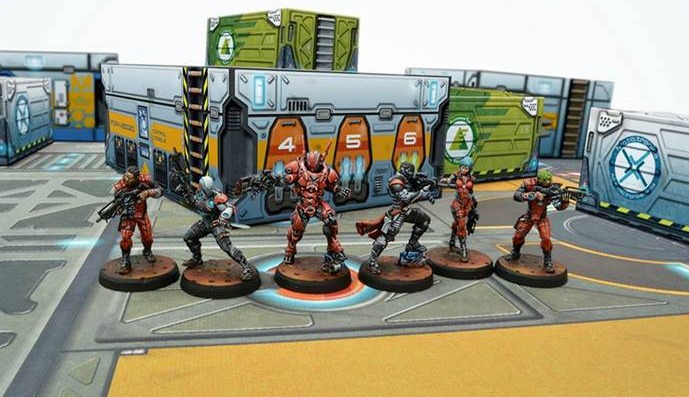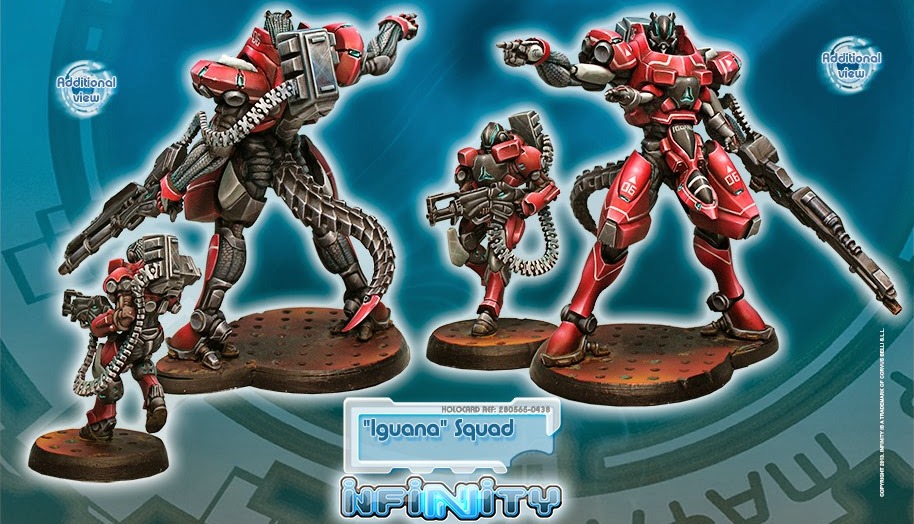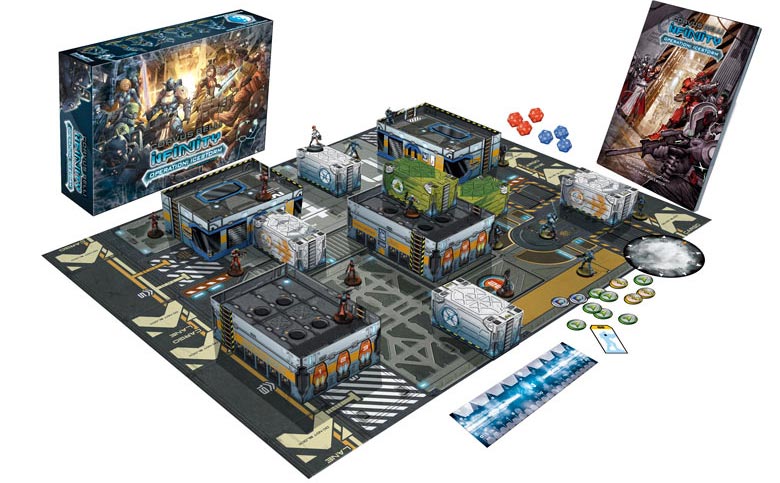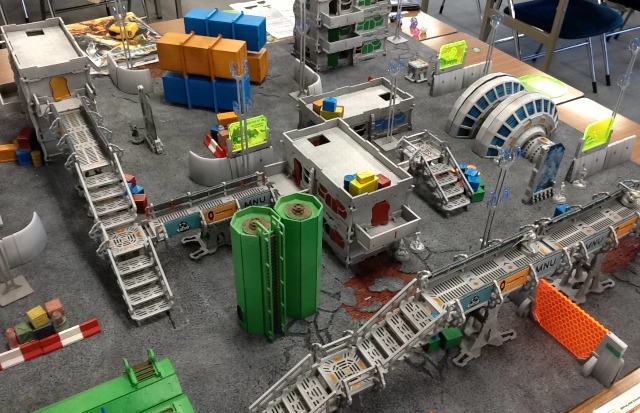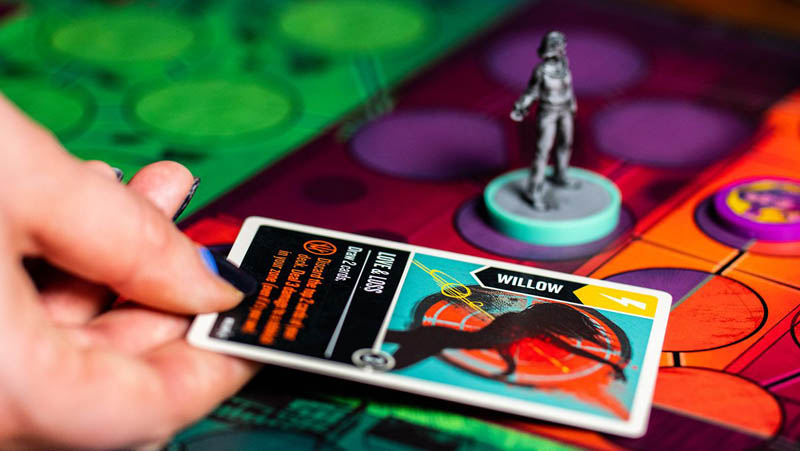[Introducing another new series of articles! Eric Tonjes is professional Nebraskan and miniatures gamer who’s agreed to review some of 2015’s most popular miniatures games. You guys were so sweet to Hilary yesterday, so please give Eric the same welcome!]
Eric: So you’ve played a lot of games. You’ve gone from the simple family stuff to the weightiest Euro, and it still isn’t satisfying. You’re looking for something more. Lately, maybe you’ve been eyeing those hunched figures in the back of the game shop, pushing around their armies of painted men and orcs and arguing about byzantine rules. You’re looking, and you’re wondering… Has it perhaps come to this? Dare I become a *gulp* miniatures gamer?
Or maybe you’ve just noticed those boxes with gloriously painted figurines on the covers and wondered what they’re all about.
In the coming months I’ll be serving as your guide to the dark world of tabletop miniatures gaming. More than that, I’ll be trying to tell you what makes the very best ones sing – what about each one makes them unique, and why people spend huge amounts of money and even larger amounts of time assembling and painting little soldiers.
Up first, let’s take a gander at Infinity, the phenomenal flagship game of Corvus Belli.
And I do mean take a gander – before anything else is said, just look at those sexy, sexy models.
Even in a world where beautiful and intricate miniatures are the norm, Infinity is gorgeous. Granted, you have to like your tiny people with a gleaming sci-fi finish and more than a hint of anime influence.
It’s also true their female sculpts have occasionally gone full-on cheesecake, especially for earlier models. It’s really bad. But Corvus Belli is getting better, you can easily avoid cheesecake in how you build your squad, and if you’re willing to forgive and/or ignore the bad stuff then you get stuff like this:
One thing’s for sure, though. Infinity gets the “game” part right.
First, it captures the feel of the science fiction it purports to portray. That’s actually more of an accomplishment than you might realize. Think, for example, about guns. Guns are deadly. They are highly sophisticated technological wonders, the wonder being how dead they make people and how efficiently they get them there. Guns should be terrifying.
Yet, in most miniatures games, guns are a joke. Your non-intellectual-property “space marine” fires hundreds of exploding bullets at your equally IP-generic bug monster alien, and the bullets basically bounce off. Which is why those marines do things like attach chainsaws to swords (or some other purely IP-disassociated melee weapon) to try to do the killing.
Not so in Infinity. Guns, in the game Corvus Belli has made, are lethal. They can basically shoot anyone they can see, anywhere on the table. And if they hit, even the lowliest grunt can blow all but the most heavily armored targets apart in a single lucky shot. If you aren’t skulking around behind cover, your soldiers will disappear faster than a cake on my kitchen counter.
This is compounded by the fact that in Infinity your enemies shoot back. It messes with traditional ideas about whose “turn” it is in several ways, but one of the most noteworthy is that enemies that can see a model when you do anything with it can respond. And that response is usually made of metal and traveling several times the speed of sound.
Every other miniatures game I’ve played is a tiring cycle of gratification and terror. You relish the pleasure of killing your opponent’s pretty things on your turn, and then grit your teeth as he does the same in return. But Infinity is terror all the time – every furtive advance by a soldier you’re crouching down, carefully checking lanes of fire. Even so, half the time you’ll try to do something as simple walk down the hallway and end up with your trooper’s brains on the wall.
Infinity doesn’t only nail this feeling in its core mechanics, either. It also breaks the mold by allowing special abilities that are truly special. Take, for example, camouflage. At the highest levels of camouflage, your opponent simply records where their model is located and doesn’t even put it on the board until it decides to act.
Imagine your TAG (Infinity’s obligatory mecha-style giant robot suit) is rampaging through the enemy, cutting them apart. You feel invincible. Nothing can stop you. Suddenly, out of nowhere, your opponent announces a reaction you didn’t see coming. Your heart suddenly fills your throat. “Oh no,” you think, and sure enough, there is a sniper rising from the shadows on a nearby rooftop. “Please no…”
It should be noted that Infinity gives some of these camouflaged snipers missile launchers.
Almost everything about Infinity just feels right. It transcends gameishness, instead immersing you in a desperate firefight between desperate men and women.
Almost everything, that is. There is one other unusual mechanic to Infinity that is quite polarizing. Some feel it ruins this illusion, but I think it actually enhances it.
You see, one of the sacrosanct rules of miniatures games is that each turn simulates a discrete chunk of time, allowing each of your little men and women to act once. Infinity scraps this idea. Instead it just gives you a pool of actions and lets you spend them on whatever models you wish. This means, for example, that you can take one model and activate it over and over, cutting a bloody Ramboesque swath through your foes while everyone else in your squad twiddles their thumbs and watches.
Some people hate this. For almost everyone it’s a huge adjustment, because it means that each individual model’s threat is potentially enormous. But I would argue it’s brilliant because it removes much of the tedium that accompanies many miniatures games.
Imagine, in a typical game, that you spend ten minutes moving all your troops. The reality is that 80% of that time is spent doing useless things – positiong, fiddling with facing, taking attacks that have no chance of succeeding. You are forced to do boring stuff, because otherwise those activations are just wasted.
Not so in Infinity! If only two of your ten models can do anything useful, that’s fine. Just use those two models – in fact, use them over and over and have them do really exciting things. That’s what you really want to do anyway. Thanks to the response system mentioned above, it doesn’t even mean your other models are useless. They can be holding ground, keeping watch, ready to respond to an enemy assault. Heck, maybe next turn they’ll be the important models instead.
To put it another way, Infinity’s activation system helps make your games heroic. You are being immersed in the best kind of science fiction skirmish – the kind in the movies, where everyone can get their moment to shine when the camera is on them and fade into the background when it isn’t.
I could go on, but instead let me try to bring together those two threads of awesome – the instant reactions, the heroism – with a story. My opponent’s forces were bearing down on me, staging a pincer movement around two buildings. One of his soldiers was about to kill a key soldier of mine.
But wait! Crouching down in between those buildings on the table, I realized that a Zero, a commando on my side, could look through a window, across a lobby, and out another window to make out the soldier’s sillouette. And that Zero squeezed off a shot, an impossible shot, that saved me from certain death.
Then, on his next turn, there was this ticking bomb about to explode, and nobody was close enough to stop it. Nobody except my little Zero. So I poured activation after activation into him. Dice were rolling and lead was spraying, but somehow he made it through a hail of enemy fire and threw himself (bleeding out!) on the explosive, stopping it at the very moment before I would have lost.
The highest praise I can pay Infinity is that I have experienced dozens of stories like that over the games I’ve played. It engineers moments that feel daring and immersive and terrifying on a regular basis. And that is high praise to pay a game indeed.
Eric Tonjes live in Lincoln, Nebraska, which he describes as “six hours from any city you’ve likely heard of”. Lacking the brawn or inclination for either growing corn or playing American football, he turned to gaming at a tender age to escape the ennui of the open plains.
Besides work and gaming, Eric is busy with his three spawn. He is indoctrinating them into the hobby, although thus far their interest has mainly been in putting various components in their mouths and inviting his painted figures to tea parties.
Quinns: By way of a surprise epilogue, I want to tell you guys that some friends and I have actually started collecting Infinity after reaching critical levels of excitement. This game is every bit as good as Eric says, and the rules are free! What a bonus.
The only thing I feel I could add to this fantastic review is the following: In addition to being a fascinating and dramatic design, my friends and I find ourselves laughing an awful lot. Infinity is funny!
It happens naturally when you combine a very human simulation of a fight together with lots of random chance. In the few games we’ve played we’ve played we’ve been belly laughing at medics killing everyone they touch, a sniper trying to climb out of a window and falling to his death, and a soldier firing a smoke grenade which immediately ricocheted and exploded at his feet.
I think I’m in love. If you need me, I’ll be checking the status of the buildings I ordered from Slovenia.


